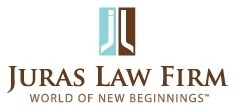Category: H-1B, H-1B attorney in Phoenix, Immigration attorney Phoenix, Immigration lawyer Arizona, Immigration Lawyer Scottsdale, Top immigration attorney, Uncategorized
Tags: H-1B annual report, H-1B attorney Scottsdale, H-1B countries of origin, H-1B occupations, H-1B Status recipients, H-1B visa attorney Phoenix
The U.S. Citizenship and Immigration Services released its Fiscal Year 2019 (FY 2019) Annual Report to Congress. Among other things, the report shows that the number of H-1B petitions filed increased by 0.4 percent from FY 2018 to 420,549. The number of H-1B petitions approved increased 16.9 percent from FY 2018 to 388,403.
Of the H-1B petitions approved in FY 2019, 71.7 percent reported that the beneficiary was born in India. The second most prevalent country of birth of H-1B beneficiaries was the People’s Republic of China, representing 13.0 percent of all beneficiaries. The third most prevalent country of birth of H-1B beneficiaries was Canada, representing only 1.2 percent of all beneficiaries. The beneficiaries from each other country represent less than 1% of all beneficiaries. The number of beneficiaries from India approved for initial employment increased by 54.7 percent in FY 2019
At the time their petitions were approved, 62.4 percent of workers granted H-1B status during FY 2019 were between 25 and 34 years of age and 85.9 percent of workers between 25 and 39 years of age.
The breakdown of the highest level of education achieved by H-1B beneficiaries shifted to upward trend towards master’s degree in recent years. The report shows that 54 percent of all H-1B petitions approved for workers in FY 2019 reported that the highest degree achieved by beneficiary was the equivalent of a master’s degree, 36 percent a bachelor’s degree and 8 percent a doctorate degree.
The reports shows the distribution of beneficiaries by occupational category. The category of computer-related occupations was the largest occupational category in 2019 representing 66.1 percent of approved petitions. The second largest category was category of occupations in architecture, engineering and surveying representing 10.1 percent of approved petitions, followed by categories in administrative specializations (5.5%), education (5.1%), medicine and health (3.9%), mathematics and physical sciences (3%), life sciences (1.6%) and managers and officials (1.2%), etc.
The corresponding shares for initial employment in computer-related occupations were 56.3 percent and 71.6 percent for continuing employment. The number of H-1B petitions approved for workers in computer-related occupations increased by 16.3 percent. The number of H-1B petitions approved for all other known occupation groups increased by 18 percent. USCIS found that the median salary of beneficiaries for FY2019 was $98,000 and 54% held a master’s degree.
Please note that this articles does not constitute a legal advice. We showed only some data from the report to outline some characteristics of H-1B visa/status recipients. If you would like to discuss if you may qualify for H-1B status, call our experienced H-1B visa attorney at 480-425-2009 or contact an experienced H-1B attorney via our website to schedule a consultation. We look forward to discussing how we can help you obtain your H-1B visa.
